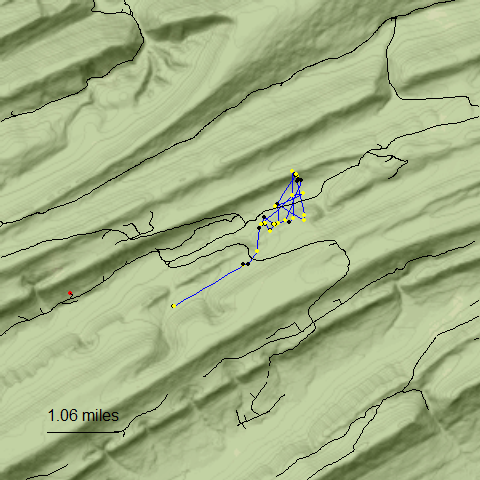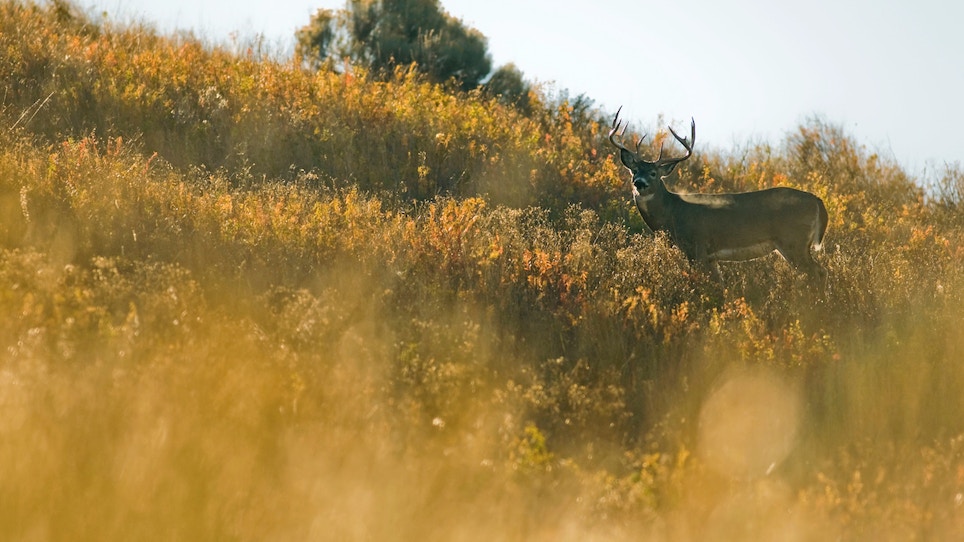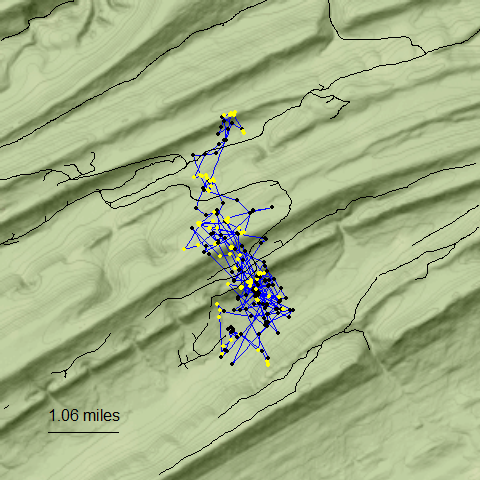In a deer-study report that reads like a James Bond plot twist, Penn State College of Agricultural Sciences describes its research — I mean, covert mission — this way:
It was February 25, 2015 when we captured him in a Clover trap in Treaster Valley on the Bald Eagle State Forest. He was an “adult” meaning he had already survived at least 2 hunting seasons and would be at least 2.5 years old during the upcoming 2015-2016 deer seasons.
That’s the last we ever saw of him for nearly 3 years. But we were still able to follow his every move. We ended up spying on him in 2015, 2016, and 2017.
Of course, the “capture” made on February 25 was only temporary. Just long enough to fit the buck with a GPS collar. The intent of the mission was simple: the biologists conducting the study would record a location every 7 hours until archery season opened in 2015. Once the hunting season started, they’d record a location more frequently at every 3 hours. Maybe the buck avoids getting arrowed, maybe he doesn’t. But, if he does, then it’s on to rifle season, where the study would record a location every 20 minutes. If this buck survived the first year wearing the GPS collar — which we now know he did — then the operation resets and starts anew.
And, in fact, the operation would start anew twice as the buck survived year after year until December 2, 2017, when a hunter harvested him at the southern end of what researchers learned was Buck 8393’s home range.
“This (study) is a fascinating look at how a deer uses its territory,” wrote hunter, writer and Meateater host Steven Rinella in a Twitter post on January 8. “Technology such as trail cams and GPS collars are often criticized for diminishing the mysteries of wildlife, but every bit of information creates an entirely new set of questions.”
The entire report is worth a read and written in a style that makes it fun and easy to take in. We’ve summarized a sample of the study’s findings here:
What’d the buck do right after capture, in the first few hours after being collared?
He made a mad dash, tracking in a straight line, back to the north edge of what researchers would learn was his home range.

The red dot (western side of image, just north of Treaster Valley Rd) was the capture location. The yellow dot to the east was the first location we obtained from the collar (yellow = daytime, black = night time). Photo: Penn State University
Buck 8393’s Summer Staycation
During the summer months, Buck 8393 basically chilled out in his home range. He spent a ton of time on the south-facing ridgetop between two valleys. Granted, it wasn’t a super relaxing season, at least not physically, because he spent his time on what foresters call a 40 percent slope. This is the name for terrain that’s so steep, for every 2.5 feet you travel horizontally, you’re also going either up or down a foot in elevation.
How far does Buck 8393 go to find himself a woman?
During the rut, his home range expanded south of what had been considered his typical stomping ground.
How does our buck respond to pressure from hunters?
When observing how Buck 8393 spent his daytime hours, there are three patterns that emerged during gun season.
- He doesn’t move a lot (see clusters of yellow dots below)
- He tends to hide on steep topographic features
- At times, he’s hiding in plain sight – right next to the road
When Buck 8393 was shot during the first Saturday of rifle season, he was at least 4.5 years old. The Penn State report uncovered other patterns in year 2 and 3 of the study, specifically during the rut, and also learned new tendencies this buck leveraged when pressured by hunters and other predators.
Each year of the study offers narratives and mapping images to support findings. You can read the complete study here.







